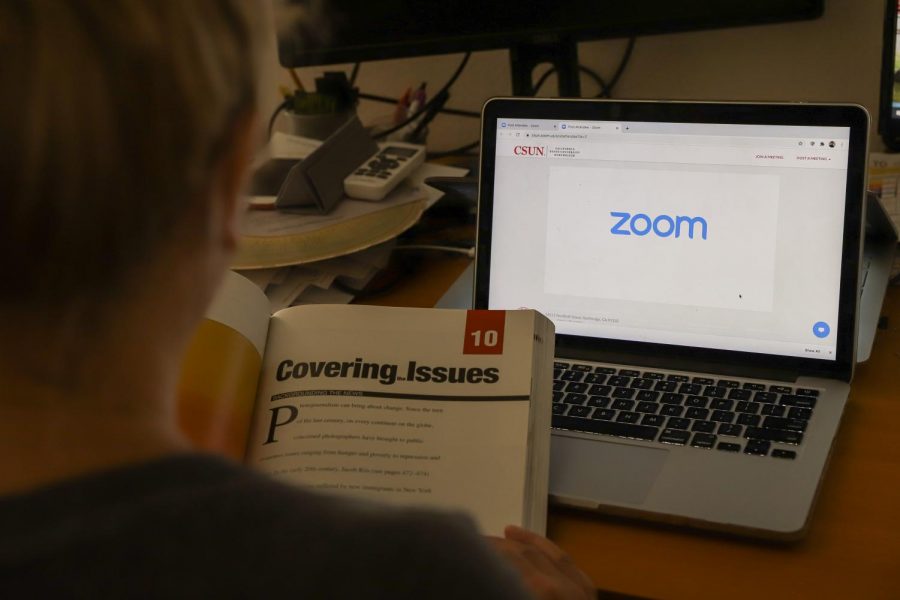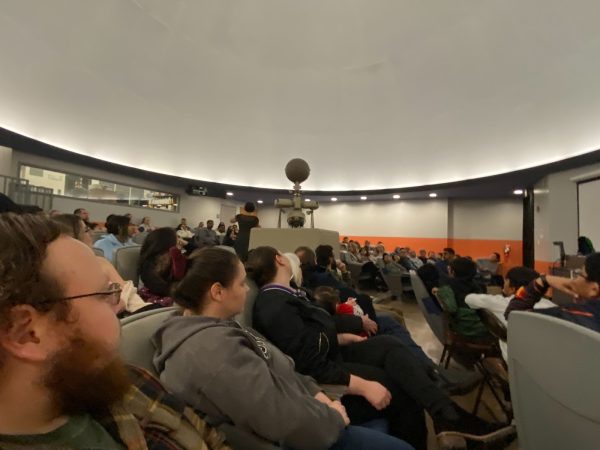Three CSUN educators explain how they prepare for virtual learning
The transition from in-person classes to virtual learning has educators concerned with making classes engaging for students.
September 25, 2020
The transition from in-person classes to online classes has affected both students and professors. Adjusting to classes via Zoom is definitely a learning curve for all of us.
The biggest concern for professors is struggling with how to make classes as engaging as possible.

“We have to change some mentality from this drag, it is not optimum to really thinking, how can we thrive in this environment? Because this might be the future for everybody,” said Eder Díaz Santillan, a journalism professor.
Santillan holds office hours right before his Zoom lectures and prepares an outline that he believes is engaging for students. Like many other professors, Santillan was worried about being able to create an environment that was similar to a classroom.
Chancellor Timothy P. White announced that all 23 California State Universities campuses will continue with virtual learning through the spring 2021 semester; professors and students will have to stay home and continue with virtual learning, which started in March. Professors like Santillan have their concerns but there are also perks that come with staying home.
His favorite part about teaching online is that he doesn’t have to commute and doesn’t have to worry about parking.
The average American commute is about 26 minutes and there are 3.5 million Americans that are “super commuters” that travel more than 90 minutes to work each day, according to Apartment List.
His least favorite part about Zoom is that he finds that students are not speaking up and participating like they did in an in-person class setting. Although he said it was definitely an adjustment, he’s trying new things each week with helpful feedback from his students.
“I want them to feel encouraged to thrive, and if they are encouraged to thrive, then I’m encouraged to thrive,” Santillan said.
Santillan is not the only professor or instructor feeling the harsh side effects of virtual learning.

Katherine Lorenz, an assistant criminal justice professor, said the transition was an adjustment because she noticed students have developed Zoom fatigue — a burnout students experience from virtual learning.
She is trying to keep her class interesting and tries to get the students more involved by incorporating more activities and asking her students questions. Lorenz’s favorite part about Zoom is that it has given her the opportunity to teach in a more creative way.
She said she dislikes that she can’t connect face-to-face with students or stop by her colleague’s offices to chat with remote learning. Another disadvantage is that she feels like she’s working a lot more because her work space is shared with her living space.
“I find that without having a clear separation of work and home space that my work life is encroaching on my personal life,” Lorenz said.
Roughly 40% of the U.S. labor force works from home full-time and almost twice as many employees are now working from home because of the pandemic, according to a new study by the Stanford Institute for Economic Policy Research.
The Society of Behavioral Science said the separation of work and home life is crucial for a conducive mental wellbeing and they even offer a five-step solution.

Deborah Glick, a management lecturer, said she prepares for her classes a week in advance and spends two to three hours reevaluating and revising her work. Adjusting to the change has been challenging for Glick because it’s very different without human interactions and personal conversations.
Although she doesn’t consider herself the most technologically savvy, she tries to attend webinars she finds on how to increase engagement and involvement in the classroom.
Since her classes are activity based, she does breakout rooms, polls and activities that involve students incorporating the content into the experience so that students are hopefully able to understand the material they are learning better.
Since her students are “little boxes on a screen,” Glick said she can only see the students’ facial expressions and not their body language, making it difficult for her to tell if they understand the material.
In regard to online teaching affecting her work-life balance, Glick believes she’s spending about three times as much working than usual.
“It takes a lot of time to prepare the content for our lessons. We figure out the best way to teach it and then spend an inordinate amount of time trying to figure out how it’s going to work,” Glick said.










